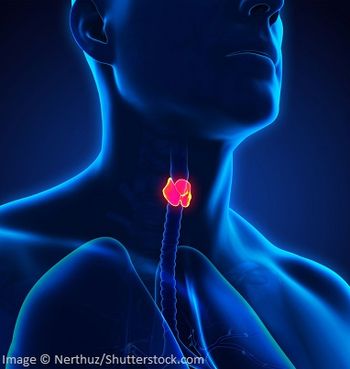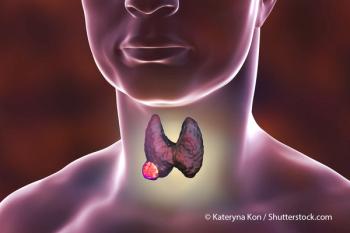
Sizing Up Ultrasound-Based Risk-Stratification Systems for Thyroid Nodules
The performance of three international guidelines in detecting thryoid cancer was compared based on their sensitivity and fine-needle aspiration rates.
The 2015 American Thyroid Association (ATA) guidelines offer relatively moderate sensitivity and unnecessary fine-needle aspiration (FNA) rates for detecting thyroid cancer. This is the finding of a recent study
“As suspicious US features and the size cutoffs for FNA [fine-needle aspiration] are not consistent among the various international guidelines, US operators may become confused when interpreting data, and effective communication with other professionals may be difficult,” wrote the authors, led by Eun Ju Ha, MD, PhD, of the Department of Radiology at Ajou University School of Medicine in Suwon, Korea.
US is a primary diagnostic tool used to assess malignancy risk, and its findings can help clinicians decide whether to proceed with FNA. Clinical guidelines advise US-based management of thyroid nodules. The ATA guidelines, which are commonly used in clinical practice, recommend adopting a pattern-based approach to risk stratification, with estimated risks of malignancy for each pattern (ie, category). Limitations of ATA include the complexity of each category and the presence of a ‘‘not specified’’ pattern with an 18.2% to 19.0% malignancy risk.
Other commonly used international guidelines include the KTA/KSThR guidelines and the ACR guidelines. The KTA/KSThR guidelines advise a less complex, pattern-based approach, which relies on solidity, echogenicity, and suspicious US features. The ACR guidelines are a novel risk-stratification system, which assign points to all US features of a nodule, with the cumulative score directing nodule imaging.
Between June 2013 and May 2015, Ha et al examined 902 consecutive thyroid nodules representing 750 patients (594 women; median age, 49.2 years), and retrospectively reviewed and classified US features using the three guidelines. They analyzed the malignancy risk of each category, and compared the diagnostic performance of FNA indications of the ATA guidelines, KTA/KSThR guidelines, and ACR guidelines. Final diagnoses were made using the cytopathologic results of the Bethesda system, as well as surgical findings. Cytological results of non-diagnostic lesions and lesions of indeterminate significance were excluded.
In total, 636 nodules (70.5%) were benign, and 266 nodules (29.5%) were malignant. Malignancy risks for ATA categories 5, 4, 3, 2, and 1 nodules were 71.7, 21.5, 2.6, 3.8, and 0%, respectively. Of note, 7.6% of nodules (69 of 902) failed to fulfill ATA pattern criteria, with a malignancy risk of 10.1% (7 of 69). The ATA guidelines showed a significantly higher diagnostic sensitivity (95.0%) vs the ACR guidelines (80.2%; P = .001). However, the ACR guidelines had a lower specificity compared with the ATA guidelines (38.1% vs 68.9%; P < .001). When compared to the KTA/KSThR guidelines, the ATA guidelines showed a reduced diagnostic sensitivity (100.0%; P = .07) but an increased specificity (28.2%; P < .001). The unneeded FNA rate was the lowest for the ACR guidelines (25.8%), followed by the ATA guidelines (51.2%), and finally the KTA/KSThR guidelines (59.4%).
According to the authors, the current study had limitations. For example, the team included only thyroid nodules that had underwent US-guided FNA, which was typically done either when suspicious US features were observed or on the biggest nodule when no suspicious features were observed. Consequently, selection bias could be an issue.
“The 2015 ATA guidelines afford a relatively moderate sensitivity and unnecessary FNA rates for detecting thyroid cancer compared to the 2016 KTA/KSThR and 2017 ACR guidelines. US practitioners require a deep understanding of the benefits and risks of the US-based FNA criteria of different guidelines and potential impact on the diagnosis of low risk thyroid cancers,” concluded the authors.
Newsletter
Stay up to date on recent advances in the multidisciplinary approach to cancer.


















































































